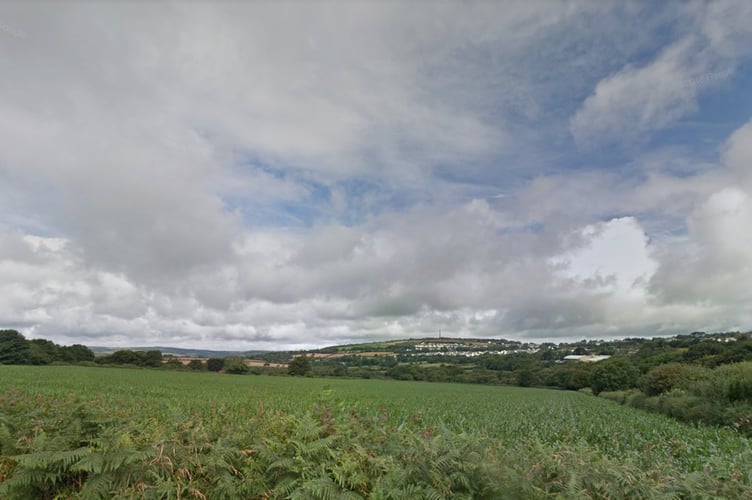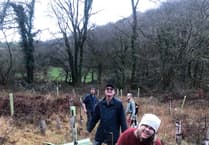EACH week, hundreds of planning applications come before Cornwall Council’s planning department, seeking to win approval for various plans right across the Duchy.
These plans can comprise of a number of different reasonings– ranging from permission to replace windows or listed building consent ranging up to large house building developments or changing of use of a building, for instance, from an office to a café, or flats.
Within this large and often complex system, there are a number of formats from which planning advice and approval can be sought.
These range from full applications where all the details which comprise a proposed development or work to a building are submitted, to outline applications, where further details are yet to be confirmed, for example, an outline application with reserved matters for appearance may not confirm the final proposed development but rather seek permission in principle.
An example of this is one for an outline permission for 20 dwellings on land with reserved matters for appearance and scale; the reserved matters would require further permission later for their inclusion.
Other types of applications include pre-application advice requests, where would-be developers submit often outline proposals to a local authority to ascertain whether it is likely to gain support or not prior to submitting a planning application.
The vast majority of applications are decided by planning officers employed by a local authority under ‘delegated powers’, meaning they do so on behalf of their employer, however, some applications are ‘called in’ by local councillors to be discussed at an area’s strategic planning committee meeting, meaning the final decision rests with a committee of councillors.
Flooding concerns at Halgavor Moor
PA20/10618: PLANS by Wainhomes for a potential 540-home development at Halgavor Moor in Bodmin has received a potential setback after an objection was raised by Cornwall Council’s flood authority.
After a to-and-fro of requesting documents from the agents for the developer regarding drainage on the land, referred to as a ‘marshland’ locally, the principal sustainable drainage officer said she was not convinced it could be adequately drained.
On March 18, the lead local flood authority submitted an updated consultation comment regarding the development, where it said: “The Lead Local Flood Authority has reviewed the details provided to support this application. We note the Environment Agency objection with regard to flood risk, in their letter dated 22/02/2024.
“The applicant's consultant has suggested that outstanding surface water drainage matters could be dealt with via a planning condition. Sustainable drainage system proposals are reviewed by the Lead Local Flood Authority alongside flood risk matters which are reviewed by the Environment Agency.
“As these two elements are linked, the Lead Local Flood Authority will not support this application or consider suggesting a suitably worded planning condition until the Environment Agency has removed its objections.
“Please reconsult the Lead Local Flood Authority once the Environment Agency's concerns have been addressed and their objections have been withdrawn.”
The developer tried to argue that investigations required by the lead local flood authority, including groundwater monitoring over a 12-month period, should be delayed until the reserved matters stage of the application, meaning that it would be in the final tranche of details to be agreed after the granting of outline planning permission.
However, this argument was refuted by the flood authority, who said that they did not accept it and after receiving amended details provided to support the application, they opted to object to the application.
Raising a formal objection to the proposal, Jackie Smith, the principal sustainable drainage officer for the Cornwall Council’s lead local flood authority said: “The Lead Local Flood Authority has reviewed the amended details provided to support this application.
“Groundwater monitoring has not been completed for a full 12-month period and in accordance with our guidance.
“The applicant has experienced the engineering difficulties that raised groundwater brings on some of their other sites where monitoring was not undertaken.
“It is argued that such investigations should be delayed until the reserved matters stage. The Lead Local Flood Authority does not accept this argument as by the reserved matters stage, the principle of development of this site will have been agreed through the outline consent.
“The Lead Local Flood Authority wishes to raise an objection to this development. It has not been demonstrated to our satisfaction that the site is not at risk from raised groundwater and so can be adequately drained.”
The plans were also criticised by the Campaign to Protect Rural England (CPRE) who issued an extremely strong objection to the plans.
Ms Paula Johnston, on behalf of CPRE said: “CPRE Cornwall continues to object to this application and reiterates the points below, previously submitted on 09/03/2021.
“Whilst we regret Cornwall Council's decision to allocate the pristine Halgavor Moor as building land, they did so subject to a proper environmental impact report. This report or reports would include consideration for Halgavor Moor's many mature trees, its role as a significant area of wildlife habitat and how suitable this largely wetland site would be for housing, along with the implications for its drainage polluting the River Camel.
“The independent reports that the developer has been required to commission clearly show the futility and in fact the sham, of this site's suitability for building houses. Additional reports have also been produced, from the Environment Agency and from Natural England both of which express concern at the Developer's Planning Application's lack of answers or apparent commitment to the substantial environmental challenges involved.
“In CPRE Cornwall's opinion, for the developer to say 'We are going to put together an action plan' is simply not good enough.
“In addition, the developers have put through a plan which would involve some land not even allocated for building. If this was agreed, it would discredit the whole allocation process and the public consultation that went with it.
“We are therefore asking the elected councillors who are entitled to vote on this ill-considered planning application, to do so with their conscience and turn this application down - outright.
“CPRE Cornwall has already demonstrated that the Council is over-providing for the building of new houses and Halgavor Moor is a perfect example of this.
“No mitigating plans by the developers can conceal the transformation of this ancient Cornish moor into a suburban housing estate. Anyone can work out that if you concrete over 27 hectares of green fields and cut down hundreds of trees, that the destruction of our declining wildlife and the environmental damage, including the generation of CO2, will be huge.
“Even in the two years since this land allocation, public awareness, and support for the value of nature and our Cornish landscapes has gone from strength to strength. Cornwall Council is deeply committed to this project, too deeply in our opinion but in light of the new thinking on the environment, they have a clearly justified route to rejecting this planning application. This is because the over provision of housing on such a site would clearly be in breach of their own high-profile policy on climate change.”
It further argued the houses were not needed, adding: “The sites allocated for Bodmin, in the Plan as submitted, provide for approximately 2,350 dwellings. Added to the existing supply of 2,252 homes, the total forecast supply would amount to 4,602 dwellings, 48% greater than the LPSP requirement of 3,100 dwellings.”
Former bank redevelopment
PA24/01678: Bourn Homes Ltd has submitted a proposed change of use to turn the former Barclays bank in Church Street, St Austell, into 11 apartments. No external alterations are proposed and it is not considered that the change of use would have an impact on the conservation area or Grade I listed church on the opposite side of the road. The flats would have bin stores and bike storage.





